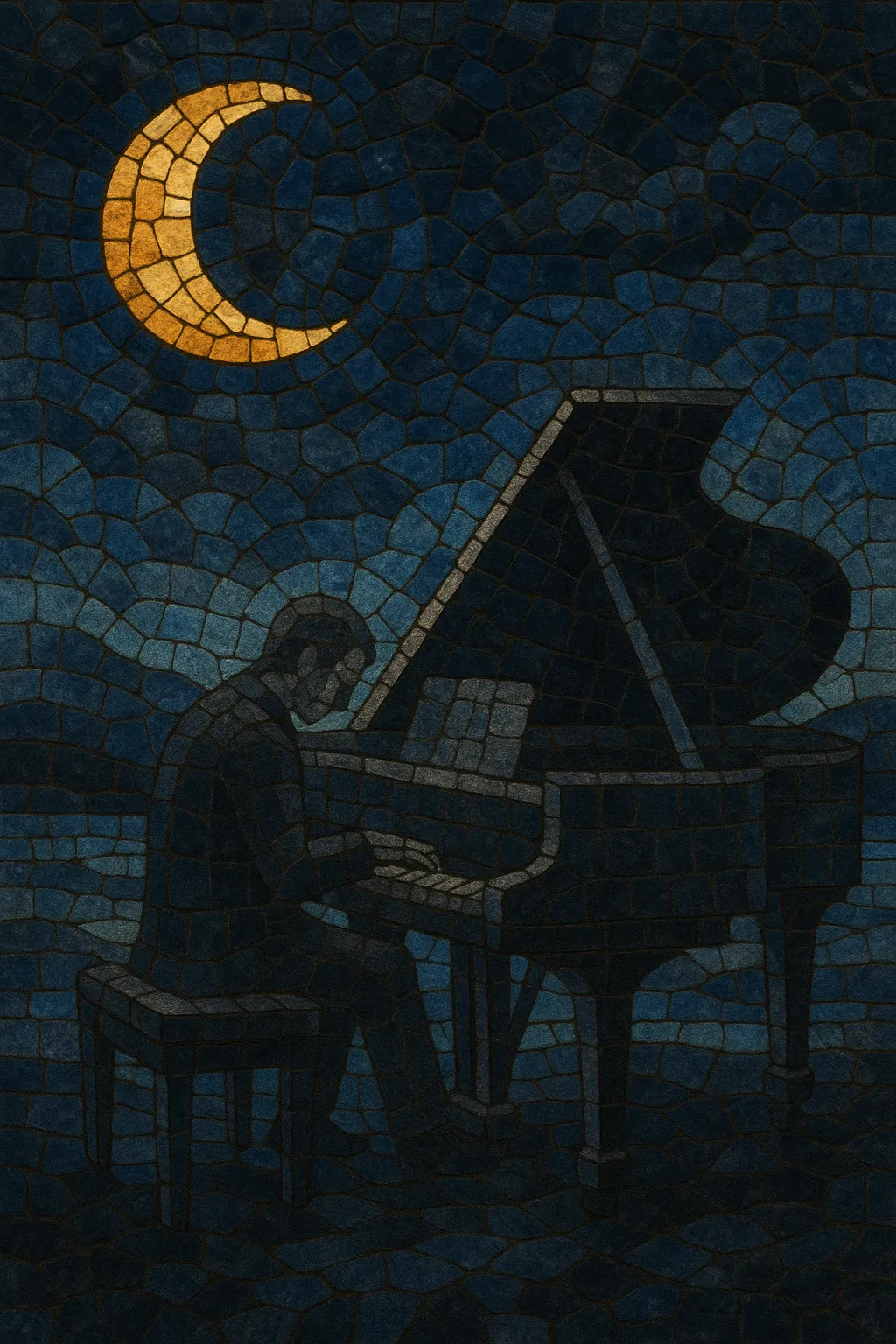A nocturne is a short, lyrical character piece that evokes the atmosphere of night, most commonly written for solo piano. It features a cantabile, song-like melody that floats over a gentle, arpeggiated or broken-chord accompaniment, inviting rubato and nuanced pedaling.
Originating with the Irish composer John Field and canonized by Frédéric Chopin, nocturnes typically explore intimate emotions—tenderness, melancholy, and reverie—through expressive harmony, chromatic inflections, and spacious pacing. While the piano nocturne is the norm, later composers also wrote orchestral and vocal "nocturnes" that broaden the palette while retaining the essential nocturnal mood.
The nocturne emerged in the 1810s with John Field, an Irish composer and pianist. Field distilled operatic, bel canto-inspired melody into an intimate piano miniature: a singing right-hand line over a hushed, arpeggiated left-hand texture. His works established the core characteristics—lyrical cantabile, gentle accompaniment patterns, and a reflective, night-evoking mood.
Frédéric Chopin expanded Field’s model in the 1830s–1840s, elevating the nocturne into a central Romantic piano genre. Chopin’s 21 nocturnes deepened harmonic color, introduced richer chromaticism and suspensions, and refined rubato and pedaling practices. His pieces set the archetype: ternary-like song forms, ornamented melodies, and an expressive, intimate tone that influenced salon music and concert repertoire alike.
After Chopin, composers such as Gabriel Fauré, Edvard Grieg, and Alexander Scriabin continued the tradition. Fauré’s set pushed harmonic subtlety and modal mixture; Grieg folded the nocturne into his Lyric Pieces; Scriabin explored coloristic harmony and left-hand textures (e.g., his Nocturne for the Left Hand). The idiom became a flexible vessel for late‑Romantic harmonic exploration.
The term "nocturne" broadened in the 20th century. Claude Debussy’s orchestral Nocturnes reconceived the idea as impressionistic tone poems; Erik Satie wrote spare, understated piano Nocturnes; Francis Poulenc contributed elegant sets; Samuel Barber paid direct homage to Field; and Benjamin Britten wrote a song cycle titled Nocturne. While styles varied, the core association with night, lyricism, and introspection remained, informing modern classical and post‑classical piano writing and influencing the wider cultural idea of nocturnal, atmospheric music.


